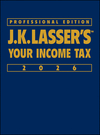Basic Rules for Securities that Could Save You Taxes
When you sell stocks, bonds, and mutual fund shares, your gain or loss depends on your basis in the securities. Keep in mind that the higher the basis, the lower the gain or greater the loss. Tax rules dictate how you figure basis in certain situations. Understanding these rules can reduce your tax bill.
1. Figure cost basis for securities
If you buy securities today, the brokerage firm or mutual fund will track your cost basis and report it to you on your statements; it is also reported on Form 1099-B as part of your annual transactions information return. This simplifies figuring gain or loss when you sell the securities. However, there was no mandatory basis tracking prior to 2011.
In one recent case, a taxpayer failed to report over 200 securities transactions that occurred over a number of years. The IRS said he had a zero basis in all of them, making all of the proceeds taxable gains. The burden is on the taxpayer to prove basis; the failure to do so results in a zero basis even though it’s obvious that there likely is some basis. Fortunately, this taxpayer asked a CPA to reconstruct his basis from investment records, and the district court said the IRS has to accept the reconstructed basis based on these records (which were generated by the same investment houses that produced the 1099-Bs that the government used to figure this gains).
2. Use estate tax basis
If you inherit securities from someone for whom a federal estate tax return was filed, you must use the same basis for reporting you gain or loss on the sale of the property as the estate used for estate tax purposes. This information is reported to you by the executor for estates of decedents dying on or after July 31, 2015. However, no reported is required before February 29, 2016. If you inherited property on August 1, 2015, or later and sold it before the end of 2015, you may have to wait to file your 2015 income tax return until you receive the basis information from the executor.
3. Don’t forget basis adjustments
You are understating basis if you fail to increase it by certain adjustments to which you are entitled. Examples of basis adjustments include:
- Reinvested dividends. If you received dividends in your taxable accounts but used them to acquire additional shares in the same security through a dividend reinvestment plan, don’t overlook these dividends. You pay tax on them when you receive them so they can be added to the basis of the securities you acquire.
- Commissions to acquire the shares. Sales costs are not part of basis but do reduce the proceeds received in the transaction.
4. Identify which shares you’re selling
Say you purchased X stock in three transactions, one in 2009, one in 2012, and one in 2015. When you sell less than your entire holding of this stock, you can minimize gain or maximize loss by being proactive. The same is true for shares in a mutual fund acquired at different times. If you don’t do anything special you’re treated as having sold shares acquired first (“the first in first out rule”). But you can use other ways to figure basis:
- Specific identification method. This applies to sales of stock and mutual fund shares. It requires you to communicate with your broker or mutual fund to specify which shares you want to sell. Check for the procedures you need to follow to make this happen; you may need to put it in writing or receive a written confirmation.
- Average cost method. This applies only to mutual fund shares and allows you to average the cost of all the shares in a particular fund, regardless of when they were acquired.
Conclusion
Take the time to consider basis and how it impacts your gain or loss when you sell securities. You’ll be rewarded at tax time.
Provisional income
If your provisional income exceeds a base amount, part of your Social Security benefits may be subject to tax.



